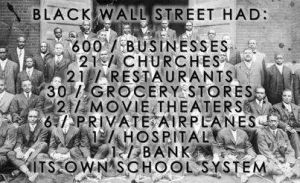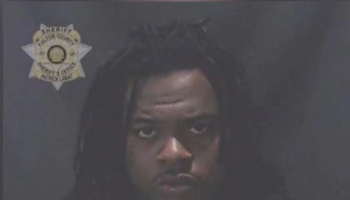In 1921, Greenwood, a successful, all-black enclave in Tulsa, was the site of the deadliest race riot in U.S. history. For the inhabitants of “the Black Wall Street,” life would never be the same.
But old Jim Crow laws followed them northwest. Tulsa was divided into two cities. Whites held court in the southern end of the city, closer to the larger main downtown area, while African Americans were segregated in the northern section of town.
The racial split, however, gave rise to black Tulsans’ famed entrepreneurial mecca. Anchored by Greenwood Avenue, black-owned businesses stretched along the more than mile-long roadway. They included grocery stores, restaurants, medical and law offices, and two newspapers. Many black entrepreneurs in addition to Stradford — including real estate developer and Greenwood founder O.W. Gurley — thrived and reached regional and even national stature. Booker T. Washington, who had lectured in Tulsa, was the first to call Greenwood “the Negro’s Wall Street.” That moniker later became “the Black Wall Street.”
Many white Tulsans, who referred to the district as “Little Africa,” were not happy about the growth and prosperity of the community, according to Andrew Rosa, assistant professor of history at Oklahoma State University. “You had a pretty stable, upwardly mobile people in Greenwood, and the city’s whites had their eye on Greenwood,” says Rosa. “That was sort of the spirit of the friction.”
Underlying racial and economic tension finally boiled over on May 30, 1921. Dick Rowland, a 19-year-old shoe shiner in downtown Tulsa, had gone to use the only bathroom for blacks, located at the top of an office building. He crossed paths with white elevator operator Sarah Page, 17, whom a store clerk claimed to have heard scream. The clerk said that he found a distraught Page and saw a young black man running from the building. There is no record of what Page told the police.
Rowland was arrested but never charged. The incident, however, made the front page of the Tulsa Tribune — along with an editorial entitled, “To Lynch Negro Tonight.”
Right before dawn on June 1, a mob of nearly 10,000 white men launched an all-out assault on the Greenwood District, systematically burning down every home and business. They dropped firebombs and shot at blacks from planes that had been used in World War I. Those blacks who were captured were held in internment camps around the city by the local police and National Guard units.
Martial law was eventually declared. The National Guard confirmed that 37 blacks and whites were killed, although historians (pdf) have put that number at closer to 300. Many of the dead black Americans were buried in unmarked graves around town, and some were laid to rest in an anonymous section of Tulsa’s Oak Lawn cemetery. Some photographers made their pictures of the dead into postcards.
The riot “just shows you how irrelevant, not only from the view of Oklahoma but that of the nation as a whole, black life was. It was seen as expendable,” says Rosa.
After the riot, black Tulsans, who were living in tents and forced to wear green identification tags in order to work downtown, still managed to turn the tragedy into triumph. Without state help, they rebuilt Greenwood, and by 1942 the community had more than 240 black-owned businesses.
















